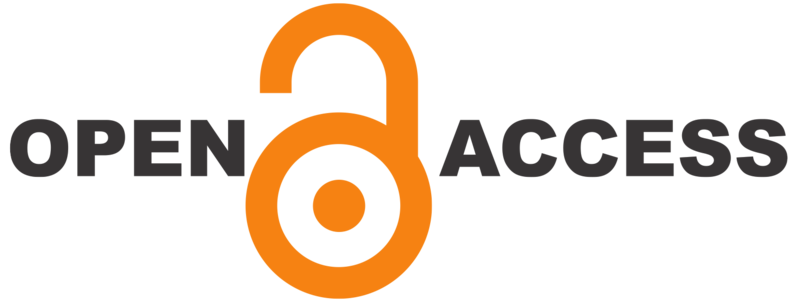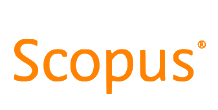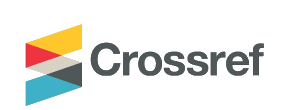An institutional framework to guide the comparison of work-integrated learning
DOI:
https://doi.org/10.21153/jtlge2019vol10no1art780Keywords:
work-integrated learning, student employability, higher education, graduate outcomes, work-based learningAbstract
Work-based placements, site visits, field trips and embedded industry-informed curriculum are employability strategies frequently applied by universities, and clustered under the umbrella term – work-integrated learning (WIL). Referring to each of these strategies as WIL can complicate comparisons (e.g. long-term placements vs. field trips) and can lead WIL related research to diverge in multiple directions. To support comparison and help guide institutional decision-making relating to WIL, the positioning of this article aligns with a recent stream of literature that attempts to outline, contrast and differentiate between various activities aimed at enhancing graduate employability. Four distinct WIL case studies from three Australian universities are described in this article: (a) students working in teams with industry partners (n=23), (b) students co-creating learning resources (n=7), (c) a student-staff partnership (n=2), and (d) students acting as peer-learning advisors (n=5). The cases were considered across five key factors: 1) ease of implementation, 2) barriers, 3) scalability, 4) authenticity, and 5) proximity. Using empirical data, the findings within the article contribute an institutional framework that highlights the benefits and drawbacks associated with differences across WIL types, intended to support good WIL practice among administrators, teachers and staff.
Metrics
References
Australian Government. (May 2017). The Higher Education Reform Package. Retrieved at https://docs.education.gov.au/system/files/doc/other/ed17-0138_-_he_-_glossy_budget_report_acc.pdf
Bowden, J., Hart, G., King, B., Trigwell, K., & Watts, O. (2000). Generic capabilities of ATN university graduates. Canberra: Australian Government Department of Education, Training and Youth Affairs.
Brown, N. (2010). WIL [ling] to share: An institutional conversation to guide policy and practice in work‐integrated learning. Higher Education Research & Development, 29(5), 507–518.
Creswell, J. W., & Creswell, J. D. (2017). Research design: qualitative, quantitative, and mixed methods approaches. Sage publications.
Clinton, I., & Thomas, T. (2011). Business students’ experience of community service learning. Asia-Pacific Journal of Cooperative Education, 12(1), 51–66.
Department of Education and Training (DET) (2018). Performance-based funding growth for universities. Accessed September 20th at https://docs.education.gov.au/documents/performance-based-funding-growth-universities.
Dollinger, M. (2018). Technology for the scalability of co-creation with students. In M. Campbell, J. Willems, C. Adachi, D. Blake, I. Doherty, S. Krishnan, S. Macfarlane, L. Ngo, M. O’Donnell, S. Palmer, L. Riddell, I. Story, H. Suri, & J. Tai (Eds.), Open Oceans: Learning without borders (pp. 346–350). Proceedings ASCILITE 2018. Geelong.
Freudenberg, B., Cameron, C., & Brimble, M. (2010). The importance of self: Developing students' self-efficacy through work integrated learning. The International Journal of Learning, 17(10), 479–496.
Gamble, N., Patrick, C. J., & Peach, D. (2010). Internationalising work‐integrated learning: Creating global citizens to meet the economic crisis and the skills shortage. Higher Education Research & Development, 29(5), 535–546.
Glaser, B. G., & Strauss, A. L. (2017). Discovery of grounded theory: Strategies for qualitative research. New York: Routledge.
Gleason, N. W. (2018). Singapore’s higher education systems in the era of the fourth industrial revolution: Preparing Lifelong Learners. In N. Gleason (Ed.), Higher Education in the Era of the Fourth Industrial Revolution (pp. 145-169). Singapore: Palgrave Macmillan.
Goldin, C., & Katz, L. F. (2018). The race between education and technology. US: Belknap Press for Harvard University Press.
Guthrie, B., & Edge, N. (2014). Graduate Destinations 2013: A Report on the Work and Study Outcomes of Recent Higher Education Graduates. Melbourne: Graduate Careers Australia.
Harris, L., Jones, M., & Coutts, S. (2010). Partnerships and learning communities in work‐integrated learning: Designing a community services student placement program. Higher Education Research & Development, 29(5), 547–559.
Harvey, L. (2001). Defining and measuring employability. Quality in Higher Education, 7(2), 97–109.
Harvey, L. (2005). Embedding and integrating employability. New Directions for Institutional Research, 2005(128), 13–28.
Hruschka, D. J., Schwartz, D., St. John, D. C., Picone-Decaro, E., Jenkins, R. A., & Carey, J. W. (2004). Reliability in coding open-ended data: Lessons learned from HIV behavioral research. Field Methods, 16(3), 307–331.
Jackson, D. (2015). Employability skill development in work-integrated learning: Barriers and best practice. Studies in Higher Education, 40(2), 350–367.
Jamelske, E. (2009). Measuring the impact of a university first-year experience program on student GPA and retention. Higher Education, 57(3), 373–391.
Jorre de St Jorre, T., & Oliver, B. (2018). Want students to engage? Contextualise graduate learning outcomes and assess for employability. Higher Education Research & Development, 37(1), 44–57.
Kaider, F., Hains-Wesson, R., & Young, K. (2017). Practical typology of authentic work-integrated learning activities and assessments. Asia-Pacific Journal of Cooperative Education, 18(2), 153–165.
Kinash, S., Crane, L., Capper, J., Young, M., & Stark, A. (2017). When do university students and graduates know what careers they want: A research-derived framework. Journal of Teaching and Learning for Graduate Employability, 8(1), 3– 21.
Lesaux, N. K., Kieffer, M. J., Faller, S. E., & Kelley, J. G. (2010). The effectiveness and ease of implementation of an academic vocabulary intervention for linguistically diverse students in urban middle schools. Reading Research Quarterly, 45(2), 196–228.
McLennan, B., & Keating, S. (2008, June). Work-integrated learning (WIL) in Australian universities: The challenges of mainstreaming WIL. In ALTC NAGCAS National Symposium (pp. 2-14).
Mok, K. H., & Neubauer, D. (2016). Higher education governance in crisis: A critical reflection on the massification of higher education, graduate employment and social mobility. Journal of Education and Work, 29(1), 1–12.
Morley, L. (2001). Producing new workers: Quality, equality and employability in higher education. Quality in Higher Education, 7(2), 131–138.
Oliver, B. (2015). Redefining graduate employability and work-integrated learning: Proposals for effective higher education in disrupted economies. Journal of Teaching and Learning for Graduate Employability, 6(1), 56–65.
Patrick, C. J., Peach, D., Pocknee, C., Webb, F., Fletcher, M., & Pretto, G. (2008). The WIL (Work Integrated Learning) report: A national scoping study. Queensland University of Technology.
Peach, D., Moore, K., Campbell, M., Winchester-Seeto, T., Ferns, S., Mackaway, J., & Groundwater, L. (2016). Building institutional capacity to enhance access participation and progression in Work Integrated Learning (WIL). Final Report for the Office of Learning and Teaching. Retrieved from https://eprints.qut.edu.au/98925/1/98925.pdf
QILT. (2017). 2017 Graduate outcomes survey: National report. Retrieved from https://www.qilt.edu.au/docs/default-source/gos-reports/2017/2017_gos_national_report_final_accessiblea45d8791b1e86477b58fff00006709da.pdf
Seidman, A. (2005). Minority student retention: Resources for practitioners. New Directions for Institutional Research, 2005(125), 7–24.
Shirley, M., Davies, I., Cockburn, T., & Carver, T. (2006). The challenge of providing work-integrated learning for law students-The QUT experience. International Journal of Clinical Legal Education, 9, 134–147.
Staehr, L., Martin, M., & Chan, K. (2014). A multi-pronged approach to work integrated learning for IT students. Journal of Information Technology Education: Innovations in Practice, 13, 1–11.
Taylor, J. (1986). The employability of graduates: Differences between universities. Studies in Higher Education, 11(1), 17–27.
Tomlinson, M. (2008). ‘The degree is not enough’: Students’ perceptions of the role of higher education credentials for graduate work and employability. British Journal of Sociology of Education, 29(1), 49–61.
Tymon, A. (2013). The student perspective on employability. Studies in Higher Education, 38(6), 841-856.
Von Treuer, K., Sturre, V., Keele, S. & McLeod, J. (2010). Evaluation methodology for work integrated learning – placements. A discussion paper. Paper presented at 3rd Biannual ACEN National Conference, September 27–October 1, in Perth, Australia.
Wilton, N. (2012). The impact of work placements on skills development and career outcomes for business and management graduates. Studies in Higher Education, 37(5), 603–620.











